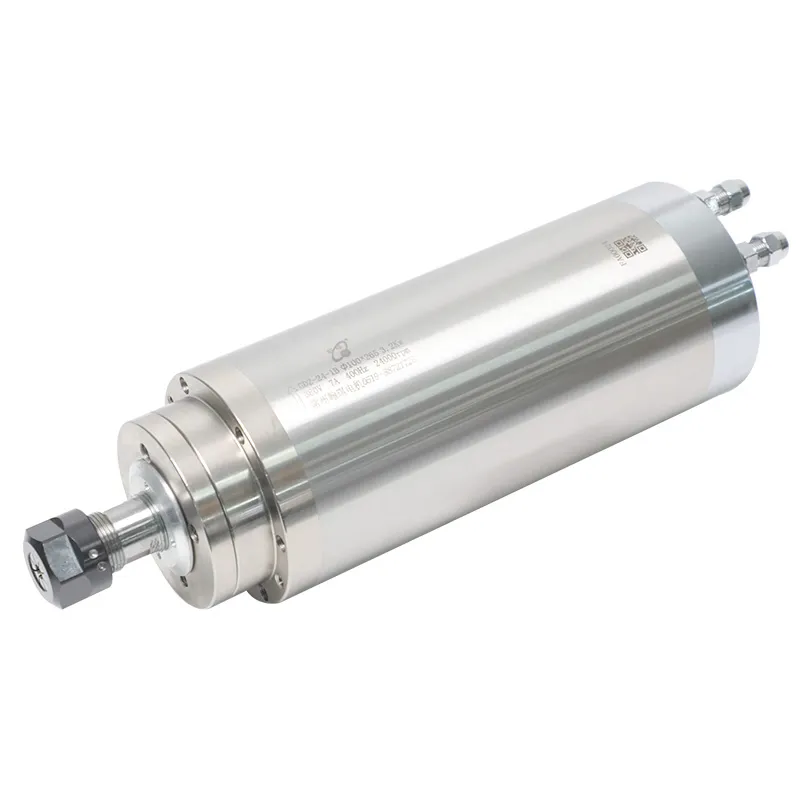Transferring a program to a CNC (Computer Numerical Control) machine is a critical step in any CNC manufacturing process. This operation involves moving G-code and other essential files from a design environment to the machine that executes the task. Whether you’re an operator working on a complex machining task or a hobbyist aiming to simplify the process, this guide will provide you with all the essential information on how to transfer your CNC program effectively.
Understanding CNC Program Transfer
The CNC program transfer process essentially moves the instructions from your computer, where the CAD/CAM software has generated the code, to the CNC machine, where the actual machining happens. This process may vary depending on the control systems used in the machine and the infrastructure in place at your facility.
There are various ways to transfer programs, including through USB drives, DNC (Direct Numerical Control) systems, Ethernet, and even wireless transfers. The approach you choose will depend on your setup, CNC machine capabilities, and the size of the programs being transferred.
Let’s dive into the different ways you can transfer programs and why these methods are important.
Tools and Equipment Required for CNC Program Transfer
1. USB Drives and Storage Devices
Using USB drives to transfer CNC programs is a common practice, especially for machines that have USB ports.
- Advantages: USB drives are easy to use, widely available, and allow for fast program transfer.
- Disadvantages: They can be misplaced, and there’s a risk of compatibility issues if the USB drive is not formatted correctly.
Tip: Always ensure that your USB is formatted in a way compatible with your CNC machine—often FAT32 format is used.
2. Ethernet and Wired Network Transfer
Transferring programs using an Ethernet cable is an efficient method for shops that have their CNC machines networked. With Ethernet transfer, you can send large files directly from your computer to the CNC machine without the need for physical drives.
- Advantages: Fast, reliable, and allows for easy integration of CAD/CAM systems with CNC machines.
- Disadvantages: Requires network setup, which may be complex for smaller operations.
3. Wireless Program Transfer
In modern setups, wireless transfers are becoming increasingly popular. By utilizing Wi-Fi, you can send files to CNC machines, which can significantly reduce setup times and eliminate cabling issues.
- Advantages: Easy to use, no cables required, and improves workflow flexibility.
- Disadvantages: Potential security risks and possible disruptions if the wireless network is unreliable.
4. DNC (Direct Numerical Control) Systems
A DNC system allows multiple CNC machines to be connected to a centralized computer for managing the transfer of files. This method is suitable for larger operations and offers features such as version control and remote monitoring.
- Advantages: Centralized control, suitable for managing multiple machines, and offers advanced features.
- Disadvantages: Requires additional software, hardware, and network setup, which can be expensive.
Step-by-Step Process of Transferring a CNC Program
1. Prepare the G-Code File
First, ensure your G-code file is ready for transfer. The G-code should be properly formatted and include all the necessary commands for your CNC machine.
Tip: Always double-check the unit settings (inches vs. millimeters) and the toolpaths to ensure that your machine will understand the commands correctly.
2. Choose Your Transfer Method
Determine whether you’ll be using USB, Ethernet, wireless transfer, or a DNC system.
- For USB: Insert the USB drive into your computer and copy the G-code file onto it.
- For Ethernet: Connect your CNC machine to the network and make sure it’s properly configured.
- For Wireless: Ensure both your computer and CNC are connected to the same Wi-Fi network.
- For DNC: Set up the DNC system to select the machine and upload the program accordingly.
3. Load the Program into the CNC Machine
Once the file is ready, load it into the CNC machine.
- USB Transfer: Insert the USB into the CNC machine’s USB port, access the memory settings on the machine, and select the appropriate file.
- Ethernet Transfer: Use the CNC’s controller to browse the network and select the file.
- Wireless Transfer: Locate the transferred file using the CNC controller’s interface.
- DNC Transfer: Manage the file from the DNC system’s software to send it to the appropriate machine.
4. Run a Dry Run or Simulation
Before machining, it’s crucial to run a simulation or dry run. This step will help you verify the tool paths, feed rates, and overall correctness of the program.
5. Start the Machining Process
Once you are confident that the program is correct, you can start the machining process. Keep an eye on the first few cycles to catch any unforeseen issues.
Best Practices for CNC Program Transfer
1. Keep Backup Copies of Your Programs
Always maintain a backup of your CNC programs. Files can be corrupted during transfer or mistakenly deleted, and having a backup will save time and prevent costly errors.
2. Use a Consistent Naming System
Develop a consistent naming system for your CNC programs. This will help you easily identify the files and avoid confusion, especially when working with multiple machines and projects.
3. Check for Updates on Software and Firmware
Ensure your CNC machine’s firmware and controller software are up to date. Updates can improve compatibility with new file types and improve overall performance.
4. Use Secure Transfer Methods
If using a network for transfers, ensure that it is secure to avoid unauthorized access to your CNC programs. Implementing encryption and secure file access protocols can mitigate potential risks.
Advanced Tips for Efficient CNC Program Transfer
1. Automate Repetitive Transfers with Macros
Using custom macro variables can automate repetitive tasks during CNC program transfer. By creating a series of G10 commands, you can simplify the loading process, especially for frequently used parts.
2. Implement Permanent Common Variables
To streamline programming, implement permanent common variables. These variables can help store information like tool offsets, reducing the need for manual input each time you run a program. This reduces errors and saves valuable setup time.
3. Monitor Machine Shop Network for Efficiency
For shops using DNC systems, having a shop editorial team or a designated technician to monitor the network can significantly improve efficiency. This helps in managing program revisions and ensuring that the correct file version is always available for the next operation.
Common CNC Program Transfer Challenges and Solutions
1. File Compatibility Issues
When transferring programs, sometimes the CNC machine may not recognize the file format, especially if generated by different CAD/CAM software.
Solution: Always use post-processors in your CAM software that match your CNC controller. For example, ensure that the G-code format produced is compatible with FANUC, HAAS, or other control systems used.
2. Network Connectivity Problems
Network-related issues may cause delays in transferring programs, particularly when using Ethernet or wireless systems.
Solution: Have a dedicated IT specialist ensure network reliability and troubleshoot connection issues. Alternatively, use USB drives as a fallback.
3. Version Control of Programs
Without proper version control, it is possible to accidentally use outdated or incorrect files, resulting in potential errors.
Solution: Use DNC software that tracks different versions of the programs and only allows operators to use approved versions.
Recommended CNC Spindle Motors for Optimal Program Transfer Performance
To achieve the best performance when executing transferred CNC programs, ensure you use a spindle motor that matches your machine’s demands. Consider these spindle motors for optimal performance:
- 24000RPM 3.2KW ER20 Water-Cooled Spindle – Ideal for achieving precision on high-speed tasks.

- 2.2KW ER20 Air-Cooled Spindle – Perfect for various materials, suitable for both beginners and experienced machinists.

For more options, explore our complete selection of CNC Spindle Motors.
Conclusion
Transferring a CNC program to your machine is a vital step in the manufacturing process that requires accuracy, careful preparation, and the right tools. By understanding the different methods available—from USB drives to DNC systems—you can choose the most suitable for your needs and ensure a smooth workflow. Always remember to follow best practices such as backing up files, securing network transfers, and using consistent file names to avoid issues.
Enhancing your knowledge of CNC program transfer can not only make your work easier but also prevent costly mistakes. Investing in quality spindle motors and robust transfer systems will further optimize your machining processes, allowing you to focus on what matters most—bringing your designs to life.
Frequently Asked Questions
1. What is the best way to transfer a CNC program?
The best way depends on your setup. USB drives are simple, while Ethernet or wireless transfer is more efficient for networked machines. DNC systems are ideal for large operations managing multiple machines.
2. Can I transfer a program to a CNC machine wirelessly?
Yes, many modern CNC machines support wireless program transfer through Wi-Fi, provided both the computer and the CNC machine are configured correctly.
3. What should I do if my CNC machine does not recognize the G-code file?
Ensure that the G-code file was post-processed for the specific CNC controller you are using. Some controllers require unique formatting that might differ between machines.
4. Is it necessary to backup CNC programs?
Absolutely. Backing up CNC programs ensures that you have a copy if anything goes wrong during the transfer or machining process, saving time and preventing rework.
5. What are permanent common variables in CNC programming?
Permanent common variables store important parameters that can be reused, like tool offsets or machine positions, helping reduce setup time and improving efficiency.

